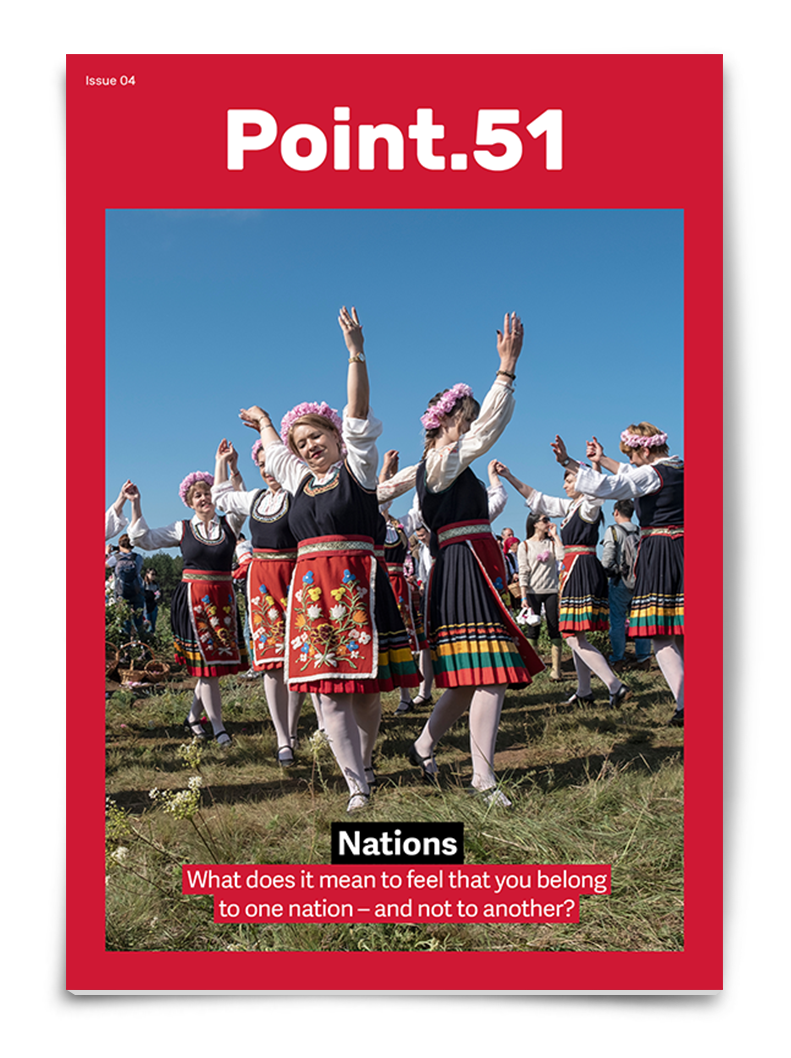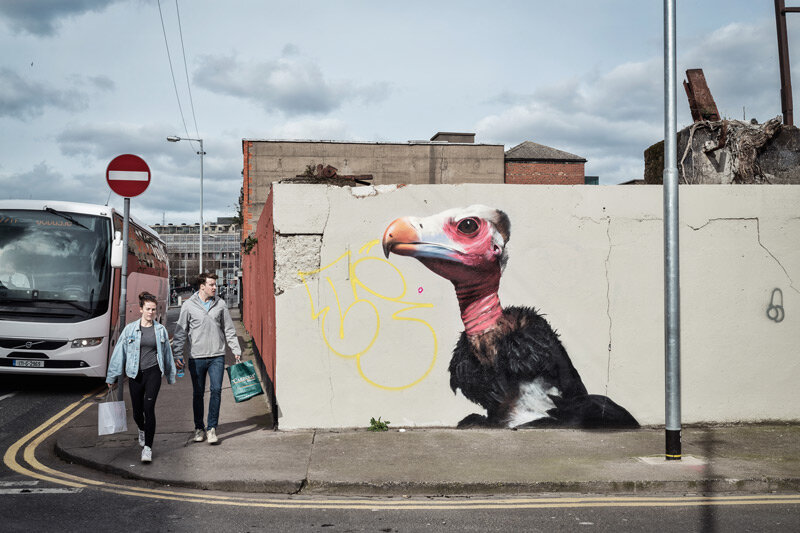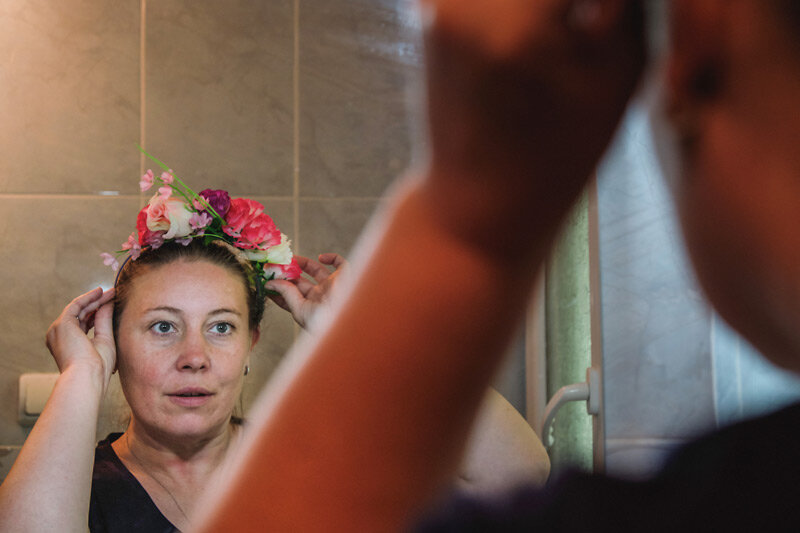Tough Soles
Ellie Berry’s two-and-a-half year hike across rural Ireland, and what she learned about the enduring benefits of walking in nature.
IN DUBLIN, at the city’s trendy Art Cafe sandwiched between a railway over-bridge and a backpacker’s hostel, I meet Ellie Berry for the first time. It is a cold but clear Friday in mid-January 2020, and neither of us – nor photographer Hugh Quigley – are really aware of just how much our lives will change in a matter of weeks.
We order coffee and settle ourselves around a large wooden table. Dressed in a Berghaus rain jacket, wool pom-pom hat, and a well-worn pair of grey hiking shoes, Ellie is direct but friendly, with the quiet self-confidence of someone who is comfortable meeting new people without feeling the need to dominate the room. At her feet is a battered twenty-litre day pack. On her wrist, a sleek black Fitbit. “It’s supposed to tell you when you’ve done 10,000 steps,” she says. “But that’s not as far as you might think.”
Ellie Berry, who walked and mapped all forty-two of Ireland’s National Waymarked Trails.
To get to our appointment, Ellie has already clocked up a good number of those ten-thousand steps, having walked the five kilometres from her flat in the city’s south-west. But the reason for her decision is not the gridlock traffic, nor the often late and overcrowded buses. It’s because she likes to walk.
In the Republic of Ireland, a country about half the size of England, but with less than ten percent of the population, Ellie Berry is about as close to a professional walker as it’s possible to be. She’s been a brand ambassador for an outdoor clothing store; has a moderately successful YouTube channel; and is the co-author of a series of maps which offer a guided tour of Ireland’s network of National Waymark trails. The summer of her twenty-first birthday, she walked across Spain. This summer, she’s planning on running a marathon.
But walking isn’t just something Ellie does to prove herself – to her own self, or to her online audience – it’s a fundamental part of her lifestyle, something that has contributed greatly to her sense of physical and mental well-being. In an average week, she clocks up about “sixty or eighty kilometres” around Dublin – including breaking up what would otherwise be a two-hour commute by bus to university at Dún Laoghaire, by walking the first hour. “I write lists in my head for the first fifteen minutes,” she explains, “then I have forty-five minutes of ‘free thinking’. Sometimes, I listen to music.”
Part of the appeal of all this walking is that it allows Ellie to escape from the “possibility paralysis” – the relentless curse of modern urban life, in which our over-stressed brains are presented with a never-ending set of choices, each with their own positive and negative traits – and endless potential consequences. For Ellie, the routine of walking half-way to university has meant “doing less” and “not staring at my phone” compared to her old habit of scrolling through social media while sitting on a bus in snail’s pace traffic. It has also allowed her to engage with her surroundings and notice “the colours, and the quiet of nature”.
This conscious choice to give her brain a break from modern life – as well as to establish a routine of regular exercise – has been inspired by her readings of the various literature around walking, nature, and mental well-being. In particular, she cites Laurin Elkin’s Flâneuse: Women Walk the City in Paris, New York, Tokyo, Venice, and London; and Rebecca Solnit’s Wanderlust: A History of Walking.
So what’s the secret of her success as a walker? I ask.
With the traditional Irish suspicion of being seen as too self-important, Ellie deftly evades my question. In the end, she settles for a suitably humble response. “People always assume that I’m really fit from doing all these walks,” she says, “but a lot of it is just stubbornness.”
The Grand Canal, constructed in the early nineteenth century to connect Dublin with the River Shannon. The canal was the starting point of Ellie Berry’s 240km walk home to Tipperary.
Aasleagh Falls on the Erriff River which winds along a portion of the Western Way, a National Waymarked Trail that stretches over 100km, between the Atlantic counties of Mayo and Galway.
IN DIFFERENT CIRCUMSTANCES, Ellie Berry might have become a kind of “outdoor influencer”, or a Himalayan explorer. The sort of athletic young adventurer who posts frequent selfies, writes a bestseller about “finding herself” in the outdoors, and ends up on a Forbes 30 under 30 list.
But the real Ellie Berry is none of those things – and nor does she wish to be. She’s an ordinary, easy-going twenty-six-year-old from rural Tipperary, who shares a room with her partner, Carl Lange, in a flat with a tiny walled garden, and is finishing a master’s degree in photography.
When I later ask about her status as a minor “role model” and her experiences with social media, Ellie tells me about her attempts to make use of Instagram to promote the ethos that she believes in: the environmental ethics of taking care of the outdoors, even as we make use of it for our personal benefit. “I don’t want it to become something that people follow just for the person,” she explains. “I don’t want it to be the me show.”
As for her decision to walk the five kilometres from her flat to our meeting, that’s not really worth dwelling on, either. After all, it’s a mere fraction of the distance she usually walks in an average week, just getting around Dublin. Instead, we discuss some of her more intrepid adventures – the ones that might well have launched her career as a professional adventurer, in a different context.
The daypack and personal gear Ellie carried during her six-day walk home from Dublin to Tipperary.
There’s the journey which started it all, in the summer of 2015, when she and her partner Carl walked across Spain. Following the northern route of the Camino de Santiago – the medieval pilgrimage route known in English as the Way of Saint James – they covered a distance of more than 900 kilometres from the French Pyrenees to the Atlantic coast of Spain.
The following year, to mark the end of her four-year honour’s degree, she decided to walk home – literally. Starting from her front door in Dublin, she headed south-west, following the city’s Grand Canal to the neighbouring county of Kildare. From there, she used Google Maps to navigate hills, mountains, country roads, and foot tracks, until she reached her family home on a hilltop outside a small town in rural Tipperary.
She completed the 240 kilometre distance – alone – in just six days. No wonder, then, that she chose to call her next adventure – a series of hikes around Ireland, totalling some 4,000 kilometres – Tough Soles.









